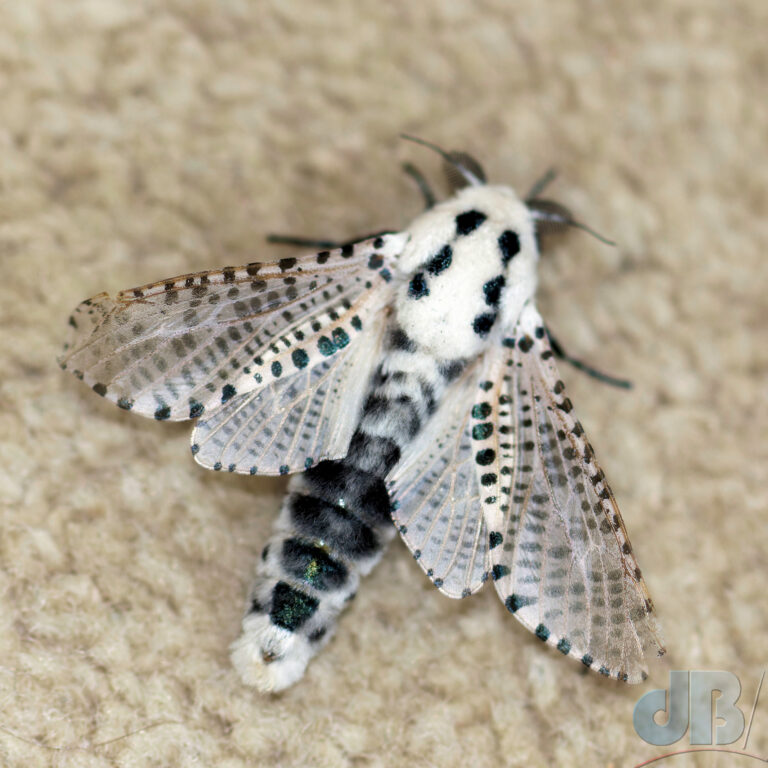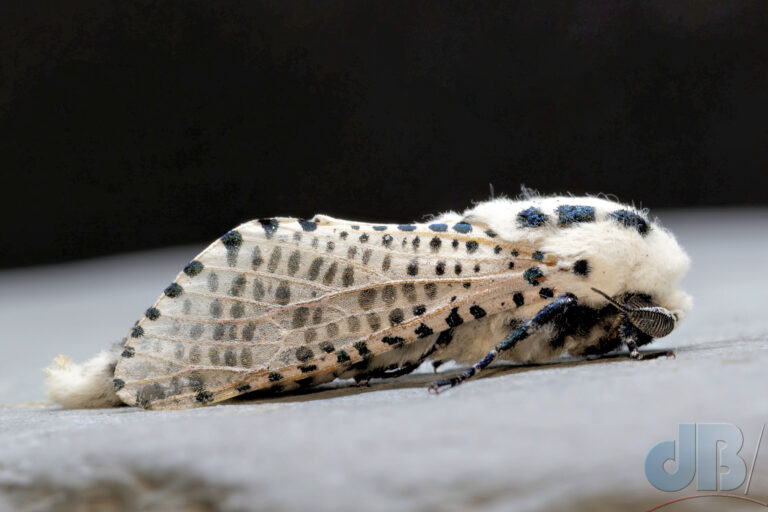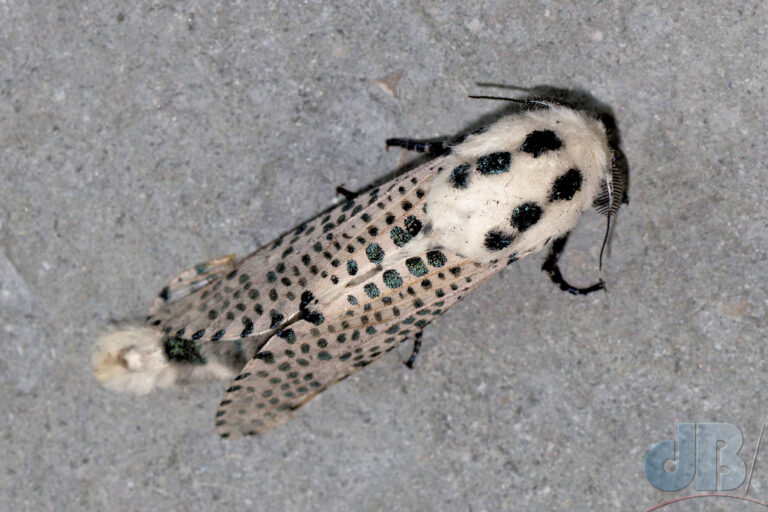As I approach my fifth anniversary as a mother, my tally shows that I have recorded and photographed almost 500 species. The most recent was new to my garden – The Leopard Moth, Zeuzera pyrina.

There are several things of interest about this moth aside from the fact that it’s fairly large and white with spots of black (almost metallic blue, in some cases). First is that the adults, the flying creatures, as opposed to the larvae (caterpillars) have no working mouth parts and so cannot eat. There are several other species, such as the Emperor, which are in a similar predicament, as it were. They are to all intents and purposes flying sex machines and nothing else, to be frank.

A second point of interest to me, is that with a quick glance you can see that the males have feathered sensory antennae, they resemble those of the Willow Beauty males. But there is an important difference in structure. Where the Willow Beauty antennae resembles a feather along its length, the Leopard’s antennae are feathered half-way along their length and seem to end in a bare spine.
Now, the really interesting thing about the Leopard Moth, as pointed out to me by uber-mother Leonard Cooper, is its lifecycle. Once mated, the female lays clutches of eggs in damaged areas of bark in the larval foodplants (deciduous trees). The larvae hatch from the eggs and begin burrowing deeper into the wood, they tunnel out feeding galleries, eating wood (they’re xyophagous) and leaving frass (poo) in their wake. If the adults are flying sex machines, then the larvae are burrowing food machines.

Once they’ve had their fill and by some conditional trigger, the larvae burrow through the wood and then pupate just under the bark. Presumably, they find a damaged patch so that once they have completed their metamorphosis within the pupal form and are ready to emerge as adults, they can spread their wings and fly off to find a mate. To do so they will use up the food reserves built up during the time they were very hungry caterpillars. In the UK, you might see adults in flight from June to July.
Oh, when I said “very hungry caterpillars, they can spend two or three years feeding in the galleries they create within the stems and branches of the tree before pupating. Now, several moths overwinter as larvae or pupa. The Leopard is not quite exceptional in that it lives so long as a larvae, perhaps up to four years rather than just 2-3 years, the Goat Moth, too spends a long period within the trees, I am sure there are others.
As to my mothing for five years, do you seriously think I am looking for a new pastime? Do Leopards ever change their spots?